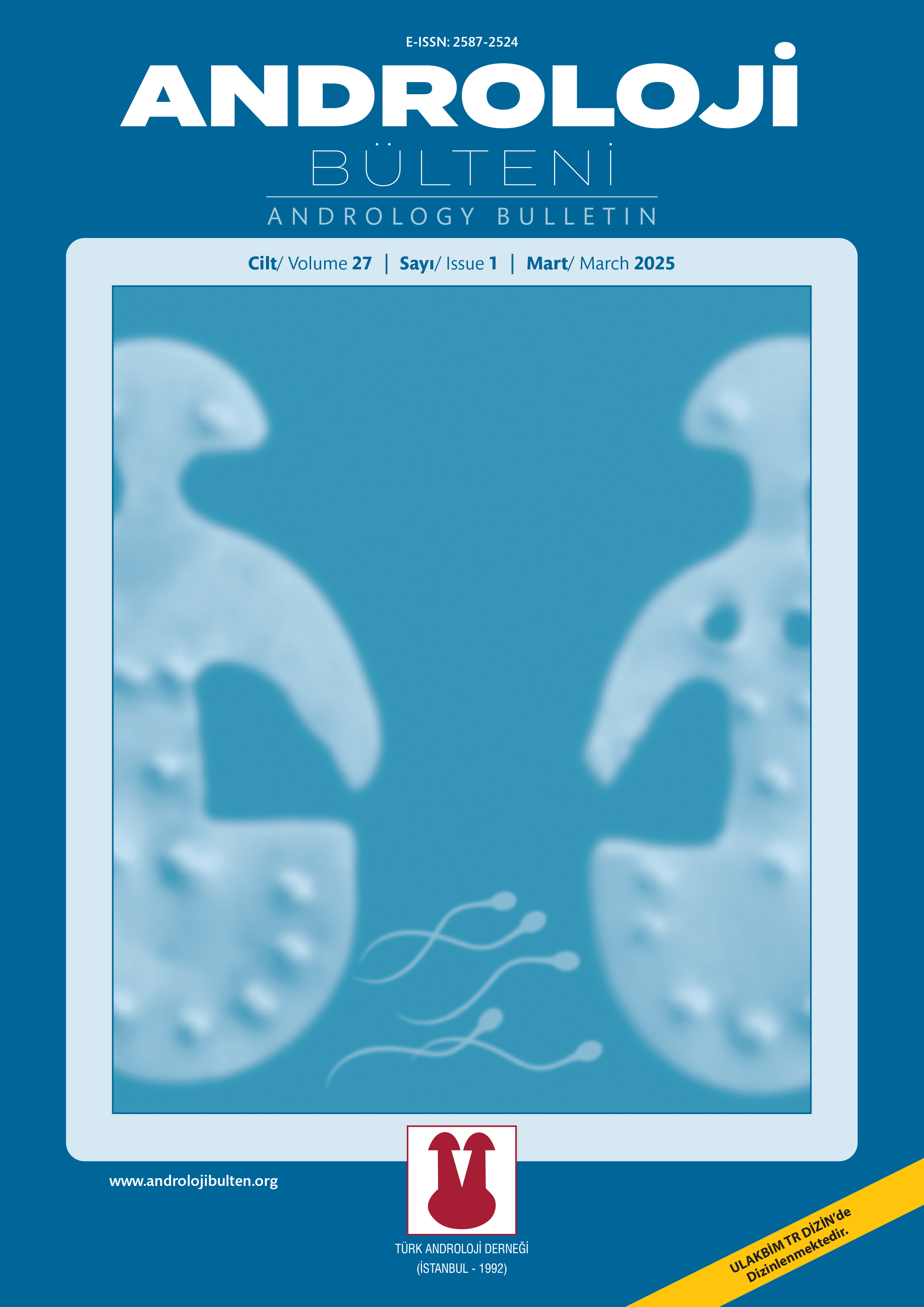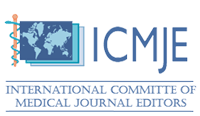INDEXES

Content of this journal is licensed under a Creative Commons Attribution-NonCommercial 4.0 International License.
Volume: 24 Issue: 2 - 2022
| 1. | Cover Page I |
| 2. | Reviewers Pages II - III |
| 3. | From the President Page IV |
| 4. | From the Editor Page V |
| 5. | Contents Page VI |
| ORIGINAL ARTICLE | |
| 6. | The analysis of nursing postgraduate thesis related to family planning in Turkey Sevda Karakaş, Zehra Gürsoy doi: 10.24898/tandro.2022.23355 Pages 89 - 96 OBJECTIVE: The aim of the study, in order to examine the theses that completed in our country on family planning, to analyze the results of theses, to report evidence based data to researchers, nurses and other providers that whom may provide health services for family planning. MATRERIAL and METHODS: In the retrospective descriptive literature search, the database of the National Thesis Center of the Council of Higher Education was searched to identify the postgraduate theses on Family Planning between 2000 and 2021. It was determined that the theses made in the Department of Obstetrics and Gynecology and Public Health Nursing, published between 2000–2021, were “4” doctorate, “35” master’s theses, and the total sample size of 39 theses reached was 15626. In the analysis of data whether the theses are master’s or doctoral thesis, publication year, purpose, sample group, design and results of the theses are summarized. RESULTS: It is reported that the use of family planning methods is low, the reproductive and sexual health knowledge level of young adults is not sufficient, and the problems experienced regarding the use of family planning methods negatively affect the sexual life quality of women and increase their anxiety level. It is determined that there is a positive relationship between the use of family planning method and the number of pregnancies, the number of alive children, the status of wanting a child, the working status of woman. CONCLUSION: The main purpose of family planning services, which is one of the most important sexual and reproductive health services, is to improve women’s health and ensure safe motherhood. It is great importance in terms of reproductive and sexual health that providing family planning services in sufficient numbers and by trained nurses and other health professionals to increase the accessibility and quality of the services. |
| 7. | Determination of sexual quality of life in women over 65 with chronic disease Kerime Hacıköylü, Nurhan Doğan doi: 10.24898/tandro.2022.24572 Pages 97 - 102 OBJECTIVE: This study was carried out to determine the sexual life quality of individuals over the age of 65 who were diagnosed with a chronic disease. MATRERIAL and METHODS: This descriptive and cross-sectional study was conducted with 100 female individuals aged 65 and over, married, without neuropsychiatric disease, and able to communicate verbally, hospitalized in the internal clinics of a University Training and Research Hospital between November 2021 and January 2022. Data in the research; It was collected using the Personal Information Form and the “Sexual Quality of Life Scale-Female”. RESULTS: Of the 100 individuals participating in the study, 57% were in the age group of 65–69, 56% were diagnosed with a chronic disease 10 years or less ago, the health status of 43% was neither good nor bad, 53% had a bad sexual life, 94% had a frequency of sexual intercourse longer than a month, 46% did not consult anyone about their sexual life problems, 72% did not have sexual desire. It was determined that 77% of them had a decrease in sexual intercourse, 77% of them had reluctance to have sexual intercourse, 14% of them had urinary incontinence, and 30% of them wanted to get information about sexual health. The mean score of women’s quality of sexual life was 62.20±6.10. The total sexual life quality scores of women who met and married happily, entered natural menopause, had sexual intercourse for more than two weeks, and had a secondary education level and above were significantly higher (p<0.05). CONCLUSION: It was determined that half of the women over the age of 65 with chronic diseases stated their sexual life as bad and their sexual life quality score were moderate. It was determined that nearly half of the individuals did not consult anyone about their sexual problems and their desire to get information about sexual health was low. |
| 8. | The effect of sexual difficulty in women on depression, anxiety and stress Zeynep Bal, Nilay Gökbulut, Tuba Uçar doi: 10.24898/tandro.2022.41713 Pages 103 - 109 OBJECTIVE: This research was carried out to determine the effect of sexual distress on depression, anxiety and stress in women. MATRERIAL and METHODS: The cross-sectional study was conducted between 15 December 2021 and 15 January 2022.262 married women over the age of 18 participated in the study. Personal Information Form, Female Sexual Distress Scale-Revised (KCSÖ-R), and Depression Anxiety and Stress Scale (DASS-21) were used to collect data. RESULTS: In the study, it was determined that the mean GCS-R score of the women was 10.06±8.89 and 40.5% (n=106) of them had sexual distress. It was determined that 86.8% of the women who had sexual distress had depression, 90.6% had anxiety and 61.3% had stress symptoms. In addition, it was determined that the depression, anxiety and stress mean scores of women who had sexual distress were higher than women who did not experience sexual distress (p<0.001). Those who are over 35 years old, their spouses are over 40 years old, have a primary education level, have a low income level, have 11–15 years of marriage and 20 years or more, define their relationship with their spouse as negative and evaluate their sexual life as bad. The mean mean was found to be higher (p<0.05). CONCLUSION: This study showed the effects of sexual distress on symptoms of depression, anxiety, and stress in women. It also revealed important sociodemographic and sexual life characteristics that affect sexual distress. |
| 9. | Sexual functions and sexual quality of life in the reproductive age women using method of family planning Ayşe Akalın, Şevval Bostancı doi: 10.24898/tandro.2022.04810 Pages 110 - 117 OBJECTIVE: This study aims to examine the sexual functions and sexual quality of life in the reproductive age women using method of family planning (FP). MATRERIAL and METHODS: The descriptive and cross-sectional study was conducted with 257 participants between June and September 2021. Women who is between the ages of 18–49, using any method of FP for the last 3 months, sexually active and volunteering to participate were included in the study. Data were collected using Personal Information Form, Index of Female Sexual Function Questionnaire (IFSF) and Sexual Quality of Life-Female (SQOL-F). Data were analyzed with the SPSS 26.0 program. RESULTS: It was found that women mostly used the withdrawal method (38.5%) and condom (37.4%) as method of FP, and they preferred method of FP mostly because they were safe (64.3%). The mean total IFSF score women was 32.69±8.41 and the mean total SQOL-F score was 84.33±19.21. The rate of women with sexual dysfunction was 16.0% and their sexual quality of life level was moderately high. It was found that the mean of IFSF and SQOL-F scores of the women who are in the young age group, having a high education level, having a high income level, having a good marital evaluation, using the modern method of FP, who are decided on the method of FP with their spouses, and who are satisfied with the method of FP were statistically significant were higher (p<0.05). CONCLUSION: Sexual health and FP counselling services need to be provided to increasing the sexual function and sexual quality of life of women. |
| 10. | Analysis of midwifery students’ knowledge of human papilloma virus: A descriptive survey study Refika Genç Koyucu doi: 10.24898/tandro.2022.50103 Pages 118 - 126 OBJECTIVE: Awareness of Human Papillomavirus is fundamental in reducing uterine cervical cancers. In this study, it was aimed to evaluate the awareness levels of the midwifery students about Human Papilloma Virus and the factors affecting this level of awareness. MATRERIAL and METHODS: This online survey was conducted in a crosssectional design in May 2021.326 midwifery students of a university were invited to the study. The data on the HPV awareness of the students were obtained using the Human Papilloma Virus Knowledge Scale. Students who did not participate in the questionnaire during the study period and who had incomplete questionnaires were excluded from the study. RESULTS: The frequency of the students who achieved the maximum score on HPV general knowledge, HPV test, HPV vaccines and HPV vaccine programs subscales were 11.3%, 12.5%, 10.9%, and 0.6%, respectively. The frequency of students who achieved the maximum score on the HPVBO scale is 5.3%. Independent predictors of high scores in the HPV Information Scale were identified as the presence of the family history of cancer and the presence of HPV positivity in the immediate environment. CONCLUSION: There are gaps in knowledge among midwifery students regarding HPV. Within the scope of the elimination of cervical cancer, which is a long-term goal, awareness of midwifery students should be kept at a high level. Increasing the importance given to HPV in undergraduate and postgraduate education may be effective. In this context, multi-center studies with large samples will be useful to identify the deficiencies. |
| 11. | The effect of transrectal prostate biopsy on sexual functions of couples Aykut Demirci, Fatih Hızlı, İsa Dağlı, Halil Başar doi: 10.24898/tandro.2022.21957 Pages 127 - 132 OBJECTIVE: Transrectal prostate biopsy is frequently used in the diagnosis of prostate cancer. However, after the procedure, patients face the risk of erectile dysfunction (ED). Erectile dysfunction also negatively affects the quality of life of patients’ partners. In our study, we aimed to investigate how the sexual life of couples is affected after transrectal prostate biopsy. MATRERIAL and METHODS: Patients (n=72) who underwent transrectal prostate biopsy for the first time between October 2021 and June 2022 and their partners were included in the study. Changes in sexual functions in the first, third and sixth months were evaluated with the International Erectile Function Form (IIEF-15) Erectile Function (EF) scores in male patients, and the Female Sexual Function Index (FSFI) and Female Sexual Distress Inventory (FSDS) questionnaires in female partners. RESULTS: The mean age of the patients was 63.47±5.09 years. The rate of newly diagnosed ED after the biopsy was 19.4%. It was observed that there was a decrease in the median EF scores in the 1st month compared to the pre-biopsy [8.5 (11), 18 (15), p<0.05, respectively]. Although the median EF scores increased over time, it was still lower in the 6th month compared to the pre-biopsy [16.5 (15), p<0.05]. It was found that the median FSFI scores in women decreased in 1st month compared to pre-biopsy [53 (20), 26 (16), p<0.05, respectively], and was similar to pre-biopsy in the 6th month [53 (19), p>0.05]. It was found that the median FSDS scores in women were higher in the 1st month compared to the pre-biopsy [34 (11), 43 (4), p<0.05], and lower in the 6th month [21 (11), p<0.05]. Also, mean age and median IPSS score were found to be independent risk factors for detecting EF (p<0.05). CONCLUSION: Transrectal prostate biopsy negatively affects the sexual life of couples. Although there is improvement in sexual functions over time, it has been observed that this situation affects men more. |
| REVIEW | |
| 12. | Human Papillomavirus (HPV) Infection and current approaches to HPV vaccine Ayşe Akalın doi: 10.24898/tandro.2022.25993 Pages 133 - 139 Human papillomavirus (HPV) is one of the most common sexually transmitted infections. It causes many diseases, including various anogenital and oropharyngeal cancers, especially cervical cancer. Primary protection from HPV includes prophylactic vaccination. There are three type HPV vaccines including Gardasil, Cervarix and Gardasil 9. Around the world, including developed countries, countries have introduced the HPV vaccine into their National Immunization Programs. Current evidences have contributed to achieving the goal of increasing HPV vaccination rates in the prevention of cervical. The aim of this review to focus on current approaches in HPV infection and HPV vaccine. |
| 13. | Postpartum pelvic floor disorders and the effect of maternal’s psycho-social situation Gülennur Suar, Nebahat Özerdoğan doi: 10.24898/tandro.2022.04874 Pages 140 - 146 OBJECTIVES: The aim of this study was to investigate the review common pelvic floor disorders in the postpartum period and the effect of this disorders maternal’s psycho-social situation. MATERIAL AND METHODS: This review was searched and published in Pub Med and Scholar Google without any date limitation. As a result of searching 56 articles published in English from the Pub Med and 5 articles published in Turkish from the Google Scholar were included in the study. RESULTS: As a result of examination it was found that common pelvic floor disorders in postpartum period is urinary incontinance, fecal incontinance, pelvic organ prolapse and sexual disfunction. Women who experience this disorder were affected daily life and psychological situation. CONCLUSION: Women who experience pelvic floor disorders in postpartum period was affected psycho-social situation. Women should be scanned pelvic floor disorders and the effect of this disorders psychosocial situation by healthcare professionals in postpartum period. More studies are needed on psycho-social effects of the postpartum pelvic floor disorders. |
| 14. | Factors affecting sexuality in the postpartum period and the responsibilities of health professionals Esra Güler, Nülüfer Erbil doi: 10.24898/tandro.2022.54531 Pages 147 - 154 The postpartum period affects women’s lives physiologically, psychologically, socially and hormonally. This period can be a stage where positive events can be experienced, or it can be a stage where a crisis related to sexual life can be experienced. Especially the first six weeks after birth, when involution takes place, constitute an important time period for female sexuality. Mode of delivery, episiotomy, breastfeeding, hormonal changes, problems related to the baby, birth traumas, sexual attitudes, body image, relationship between spouses, social role change, post-coitus bleeding, itching, burning, loss of desire, orgasmic pain, loss of vaginal lubrication, psychological and physiological changes can affect sexual desire and function. When sexual problems cannot be resolved in the postpartum period, it negatively affects women’s sexual health. Health professionals have important responsibilities in avoiding or solving these problems in the postpartum period. Postpartum sexuality education should cover the topics including the effects of physical, social and hormonal changes in the body of the woman in the postpartum period on sexual life, the positions to be preferred during coitus, contraception, breastfeeding effects on sexual life and time to start postpartum sexual intercourse. |
| 15. | Menopause and sexual life: Systematic review Fatma Aslan Demirtaş, Burcu Fırat, Nevin Sahin doi: 10.24898/tandro.2022.54837 Pages 155 - 162 OBJECTIVE: This article aims to evaluate the results of studies on the effect of menopause on women’s sexual functions. MATERIALS and METHODS: The literature search was conducted using the keywords “menopause”, “sexuality”, “sexual dysfunction” in Google Scholar, National Thesis Center, Ulakbim search engines between 12 November 2021 and 12 December 2021. 3101 studies on menopause and sexual life were accessed and 16 studies meeting the inclusion criteria were evaluated within the scope of the study. RESULTS: It has been determined that sexual dysfunctions such as hypoactive sexual desire disorder, decreased vaginal lubrication, anorgasmia, vaginismus, dysparonia and decreased number of sexual intercourse are seen in women due to menopause. Aging and surgical menopause have increased the severity of these sexual dysfunctions. |
| PUBLICATIONS AND CONGRESS CALENDAR OF ANDROLOGY | |
| 16. | Publications and Congress Calendar of Andrology Pages 163 - 166 Abstract | |














